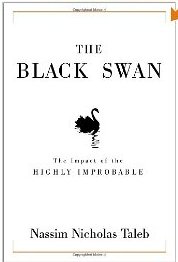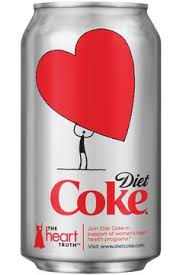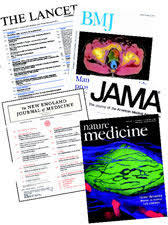
February 21st, 2011 by Bryan Vartabedian, M.D. in Opinion, Research
Tags: 33 Charts, Annals Of Internal Medicine, Clinical Outcomes, Controlling Blood Pressure, Dr. Bryan Vartabedian, Dr. Pauline Chen, Evidence-Based Healthcare Decisions, Healthcare Social Media, Listening to Personal Narratives, Narrative Communication, Narrative Medicine, New York Times, Parallel Chart, Reducing Hypertension, Rita Charon, Storytelling and Health, The Healing Power of Storytelling, University of Massachusetts Medical School
No Comments »

 More in the evolving meme of narrative medicine: Researchers at the University of Massachusetts Medical School (my alma mater) have found that for a select population of individuals, listening to personal narratives helps control blood pressure. While the power of stories is old news, the connection to clinical outcomes is what’s newsworthy here. Read Dr. Pauline Chen’s nice piece in the New York Times. The implications for ongoing work in this area are mind boggling.
More in the evolving meme of narrative medicine: Researchers at the University of Massachusetts Medical School (my alma mater) have found that for a select population of individuals, listening to personal narratives helps control blood pressure. While the power of stories is old news, the connection to clinical outcomes is what’s newsworthy here. Read Dr. Pauline Chen’s nice piece in the New York Times. The implications for ongoing work in this area are mind boggling.
The Annals of Internal Medicine study authors sum it up nicely:
Emerging evidence suggests that storytelling, or narrative communication, may offer a unique opportunity to promote evidence-based choices in a culturally appropriate context. Stories can help listeners make meaning of their lives, and listeners may be influenced if they actively engage in a story, identify themselves with the storyteller, and picture themselves taking part in the action.
This nascent field of narrative medicine caught my eye when I stumbled onto the work of Rita Charon and the concept of the parallel chart. Extrapolation to social media may be the next iteration of this kind of work.
*This blog post was originally published at 33 Charts*
February 20th, 2011 by LouiseHBatzPatientSafetyFoundation in Opinion, True Stories
Tags: AI, Appreciative Inquiry, Continuous Monitoring, DARPA, Dr. J. Paul Curry, Healthcare Awareness, Hoag Memorial Hospital Presbyterian, Hospital Safety, Hospitalist Medicine, Inpatient Monitoring, Larry Lynn, Louise H. Batz Patient Safety Foundation, Medical Errors, Medical Mistakes, Medical Monitors, Mistakes In Patient Care, Monitoring Patients in the Hospital, Nassim Nicholas Taleb, Patient Safety In Surgery, Postoperative Care, Pulse Oximeter, Ronald Reagan UCLA Medical Center, Sleep Apnea, The Black Swan, Transforming Patient Care, Unexpected In-Hospital Deaths
No Comments »

This is a guest post by J. Paul Curry, M.D.
I was inspired when I lost my best friend 15 years ago to a common medical-error phenomenon: The lack of monitoring patients in the hospital.
Losing Mark altered my entire career in medicine and started me on a long journey of trying to understand how this particular problem happens. The journey has been eye-opening for me for many reasons, and probably most importantly by striving to learn and understand how the human brain can deceive itself into believing that thoughtful, rational, goal-directed tactics are always the solution to finding the answers to highly-complex enigmas.
 Actually, the blockbusting solutions that change the course of our culture — how we do things — are most often totally unpredictable and discovered by accident by disruptive innovators, such as Dr. Larry Lynn of the Sleep and Breathing Research Institute, willing to tinker on their own and against the grain of thousands of smart people who dismiss this kind of outlier work as fantasy. To get just how often this happens and why, I’d invite those unfamiliar with Nassim Nicholas Taleb’s work to read “The Black Swan : The Impact of the Highly Improbable” and other books of his. This is what we’re up against today.
Actually, the blockbusting solutions that change the course of our culture — how we do things — are most often totally unpredictable and discovered by accident by disruptive innovators, such as Dr. Larry Lynn of the Sleep and Breathing Research Institute, willing to tinker on their own and against the grain of thousands of smart people who dismiss this kind of outlier work as fantasy. To get just how often this happens and why, I’d invite those unfamiliar with Nassim Nicholas Taleb’s work to read “The Black Swan : The Impact of the Highly Improbable” and other books of his. This is what we’re up against today.
I was recently operated on, having a significant multi-level back surgery at one of the outstanding university spine programs in the country, supported by one of the elite anesthesia programs. I was told by the resident that I’d be going to the general care floor following my surgery, where I’d be checked on regularly. This was a given because I’m a fitness fanatic, but the resident wasn’t prepared for my followup questions. As I probed for more detail, it became apparent that no one in the organization had any inkling that nursing checks only occurring every four or eight hours on a patient fresh from surgery with patient-controlled narcotics was less than standard of care.
I told them I have mild sleep apnea and wanted pulse oximetry at minimum. I had to be upgraded to telemetry to get it. What’s more interesting is that there was so little understanding of this problem that they put me on pulse oximetry in a room where the only one who could watch it was me — the patient. Read more »
February 20th, 2011 by John Mandrola, M.D. in Opinion, Research
Tags: American Heart Association, American Heart Month, American Stroke Association, Aspartame, Cardiovascular Health, Coca-Cola Company, Diet Coke, Diet Soda, Diet Soda and Heart Risk, Diet Soft Drinks, Dr. John Mandrola, Dr. Steven Goldberg, Food and Drink, Food and Nutrition, Healthy Diet, Heart Attack Risk, Heart Health, International Stroke Conference 2011, Junk Food In A Can, LA Times, Los Angeles Times, Massachusetts General Hospital, National Heart Month, NutraSweet, Obesity Epidemic, Stroke Risk
No Comments »

 It tastes sweet. It’s pleasurably fizzy. And free of calories. What’s more, the FDA says NutraSweet (aspartame) is safe. So what’s not to like about diet soft drinks?
It tastes sweet. It’s pleasurably fizzy. And free of calories. What’s more, the FDA says NutraSweet (aspartame) is safe. So what’s not to like about diet soft drinks?
A bunch. The ongoing debate about the healthiness of diet soft drinks reminds me of the old adage, “If something sounds to be true, it probably is.”
Artificially-sweetened “diet” drinks get touted as healthy alternatives to sugary drinks because they contain no calories or carbohydrates. On paper it seems plausible to think they are inert, no more dangerous than water. The Coca-Cola Company sublimely strengthens this assertion by putting a big red heart on Diet Coke cans.
But diet-cola news (Los Angeles Times) presented at the International Stroke Conference 2011 suggests otherwise. This widely-publicized observational study of 2,500 older patients (average age=69) from New York showed that drinking diet soda on a daily basis increased the risk of having a heart attack or stroke by 61 percent. The abstract — not a peer-reviewed study — stated that this association persisted after controlling for other pertinent variables.
Sure, this is only a look back at 559 patients who had a vascular event. The study asserts only an association, not that diet colas cause heart attacks and strokes. That’s a big difference.
That said, however, I don’t view these results as trivial either. This trial builds on the results of prior studies of diet drinks which strongly suggest that despite their lack of calories, diet drinks don’t prevent obesity. Read more »
*This blog post was originally published at Dr John M*
February 18th, 2011 by GarySchwitzer in Health Policy, Opinion
Tags: Annals of Surgery, British Medical Journal, Conflicts of Interest, Dr. Ivan Oransky, Drug Sales, Embargo Watch, Evaluating Medical Evidence, Gary Schwitzer, Healthcare Policy, Healthcare Reporters, HealthNewsReview.org, Journal of Negative Results in BioMedicine, Medical Journal Rankings, Medical Journal Reprints, Medical Journals, Negative Studies, NEJM, New England Journal of Medicine, PLoS Medicine, Positive Publication Bias, Publishing Clinical Evidence, Publishing Clinical Trials, Publishing Medical Research, Reporters Covering Medical Studies, Retraction Watch, Reuters Health, Science and Medicine Reporting, Scientific Truth, Unpublished Medical Studies
No Comments »

This is a guest column by Ivan Oransky, M.D., who is executive editor of Reuters Health and blogs at Embargo Watch and Retraction Watch.
 One of the things that makes evaluating medical evidence difficult is knowing whether what’s being published actually reflects reality. Are the studies we read a good representation of scientific truth, or are they full of cherry-picked data that help sell drugs or skew policy decisions?
One of the things that makes evaluating medical evidence difficult is knowing whether what’s being published actually reflects reality. Are the studies we read a good representation of scientific truth, or are they full of cherry-picked data that help sell drugs or skew policy decisions?
That question may sound like that of a paranoiac, but rest assured, it’s not. Researchers have worried about a “positive publication bias” for decades. The idea is that studies showing an effect of a particular drug or procedure are more likely to be published. In 2008, for example, a group of researchers published a New England Journal of Medicine study showing that nearly all — or 94 percent — of published studies of antidepressants used by the FDA to make approval decisions had positive results. But the researchers found that when the FDA included unpublished studies, only about half — or 51 percent — were positive.
A PLoS Medicine study published that same year found similar results for studies long after drugs were approved: Less than half — 43 percent — of studies used by the FDA to approve 90 drugs were published within five years of approval. It was those with positive results that were more likely in journals.
All of that can leave the impression that something may work better than it really does. And there is at least one powerful incentive for journals to publish positive studies: Drug and device makers are much more likely to buy reprints of such reports. Such reprints are highly lucrative for journals. Read more »
*This blog post was originally published at Gary Schwitzer's HealthNewsReview Blog*
February 18th, 2011 by Mary Knudson in News, Opinion
Tags: Cardiology, Diagnostic Imaging, FDA, Food and Drug Administration, Heart Failure, Heart Health, Heart Patients, Heart Sense Blog, Implantable Medical Devices, Magnetic Resonance Imaging, Mary Knudson, Medical Device Companies, Medical Device Interference, Medical Device Makers, Medical Device Safety, Medtronic, MRI-Safe Pacemakers, Radiology, Revo MRI SureScan Pacing System, Scientific American
No Comments »

This was the Guest Blog at Scientific American on February 16th, 2011.
New wave of MRI-safe pacemakers set to ship to hospitals
This week Medtronic will begin shipping to hospitals in the United States the first pacemaker approved by the FDA as safe for most MRI scans. For consumers, it is a significant step in what is expected to be a wave of new MRI-compatible implanted cardiac devices.
But this is an example of one technology chasing another and the one being chased, the MRI scanner, is changing and is a step ahead of the new line of pacemakers. The pacemaker approved for U.S. distribution is Medtronic’s first-generation pacemaker with certain limitations, while its second-generation MRI-compatible pacemaker is already in use in Europe where approval for medical devices is not as demanding as it is in the U.S. So let’s check out what this is all about — what it means now for current and future heart patients and where it may be headed.
We are all born with a natural pacemaker that directs our heart to beat 60 to 100 times a minute at rest. The pacemaker is a little mass of muscle fibers the size and shape of an almond known medically as the sinoatrial node located in the right atrium, one of four chambers of the heart. The natural pacemaker can last a lifetime. Or it can become defective. And even if it keeps working normally, some point may not function well along the electrical pathway from the pacemaker to the heart’s ventricles which contract to force blood out to the body.
Millions of people in the world whose hearts beat too fast, too slow, or out of sync because their own pacemaker is not able to do the job right, follow their doctors’ recommendation to get an artificial pacemaker connected to their heart to direct its beating. The battery-run pacemaker in a titanium or titanium alloy case the size of a small cell phone, (why can’t it be the size of an almond?) is implanted in the upper left chest, just under the skin, with one or two insulated wire leads connecting to the heart. It can be programmed to run 24/7 or to only operate when the heart reaches a certain state of irregular beating. Read more »
*This blog post was originally published at HeartSense*
 More in the evolving meme of narrative medicine: Researchers at the University of Massachusetts Medical School (my alma mater) have found that for a select population of individuals, listening to personal narratives helps control blood pressure. While the power of stories is old news, the connection to clinical outcomes is what’s newsworthy here. Read Dr. Pauline Chen’s nice piece in the New York Times. The implications for ongoing work in this area are mind boggling.
More in the evolving meme of narrative medicine: Researchers at the University of Massachusetts Medical School (my alma mater) have found that for a select population of individuals, listening to personal narratives helps control blood pressure. While the power of stories is old news, the connection to clinical outcomes is what’s newsworthy here. Read Dr. Pauline Chen’s nice piece in the New York Times. The implications for ongoing work in this area are mind boggling.
















